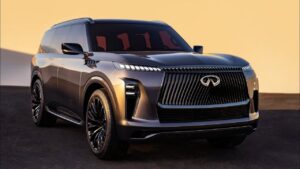This year, both the Ford Mustang and the Toyota Camry got new looks. In NASCAR, those cars need to be revised to match. With these changes for regular vehicles, both Ford and Toyota have taken the chance to sneak in better aerodynamics for their Cup Series cars. Ford went for a powerful look with the Mustang’s front end, which had sharp and tall fenders. Toyota, on the other hand, has gone for a more balanced look to make the most of every NASCAR-allowed aerodynamic factor.
Design and Features of the New Toyota Camry
The new Toyota Camry XSE Cup car has a flatter front end that looks more like the “hammerhead” design features of the new Toyota Camry production car. The previous generation’s front end was more angular. At first glance, the Camry Cup car looks less flashy than the previous model. However, a closer look reveals several details that point to better aerodynamic performance and better compatibility for drafting tracks like Daytona and Talladega.
To begin, we can see that the hood has grown to a flatter, rectangular shape, and the narrow hood duct vents look like they have been moved inward. One of the most important parts of how the NASCAR Next Gen car moves air is these hood duct exits, and Toyota has had many chances to rethink them. Since the first Next Gen-era NASCAR Camry came out, these fans are the third different way that air has been able to leave the radiator.
Front Bumper Innovations

As we move down the hood toward the front bumper, we can see that the “CAMRY” writing is on the front in a clear, flat area. There may have been work done to make the Camry draft better on superspeedways like Atlanta, Daytona, and Talladega, where cars have to be stacked behind each other. Toyota has some very good superspeedway racers, like Bubba Wallace and Denny Hamlin, but the Next-Gen car could have done better on these kinds of tracks. Next year, the vehicle should be more competitive after being tweaked to move better. It would also be good to have more Camry cars in the field.
Subheading: Front Bumper’s K-Shaped Edge

The bumper’s bottom grille area shows that drafting wasn’t the only thing that was thought about. With the way the C-shaped corner vents are made, we can see parts of the bumper from a regular car that have been tweaked to fit the race car better. There are also steps at the bottom of the bumper that let air flow over the side of the vehicle. The front bumper is very complicated; it has angles that show the edge is K-shaped to improve airflow.
The new step or ramp, which is a big change from Toyota’s previous design, can be seen in the bottom corners of the hood. It’s kind of like a dive plane that we might see on a GT race car. Most likely, these ramps were made so that you can control the front downforce.
However, in the world of race cars, nothing lives in a vacuum. The ramps should also give teams more choices about how to set up their cars and how those choices affect other aerodynamic parts of the vehicle, like the flat underbody.
Read More: 2024 Jeep Recon EV : A Look at the Off-Road Vehicle
As we go down the side of the car, we can see that the top of the rocker plate has been pushed down a bit. The small bump that was right before the end of the back wheel is gone. The TRD logo has been taken off the rocker plates as well since the XSE is now the top trim level of the new Camry.
Although there aren’t as many changes to the back of the car as there are to the front, it does have a lighter, more sculpted look. This is partly because of the quarter-panel styling, which leads to chamfered bumper edges and thinner fake tail lights to look like the real car.
Production and Expectations

Toyota’s California Design Research produced the race car in the United States, just like that production vehicle. “Toyota’s attention to detail will be shown off in the 2024 Camry XSE race car, just like it was in the new Camry for everyday use.” “We can’t wait to race this car and have much success with it for years to come,” said Paul Doleshal, group head of motorsports for TMNA (Toyota Motor North America).
“The amount of work put into this car’s production cannot be overstated, and we thank everyone at TRD and Calty Design for their efforts in creating a premier vehicle for our team partners to compete for wins and championships.”
Ford vs. Toyota Approach
Ford’s latest Mustang racer has been mostly focused on speed at intermediate tracks, while Toyota’s Camry Cup car was designed with a more general goal in mind. The different aerodynamic parts we can see in these launch photos look like they show details that make up most of the numbers that NASCAR allows within the aerodynamic efficiency box without going too far in any one way.
The Mustang has done poorly on medium-sized tracks, while the Camry has done well there. They are trying to improve their performance in other ways by taking the opposite method.
Pre-Season Testing and Daytona 500
A few teams will start pre-season testing at Phoenix Raceway next week, which will be the first time the updated cars see the track. However, it will be the Daytona 500 in February, which will be the first time the vehicles are used in a points competition, which will show how well all the time spent in the wind tunnel and with CFD has paid off.








